AZ900: Microsoft Azure Fundamentals
Identity Access and Security
Microsoft Defender for Cloud
Microsoft Defender for Cloud is a comprehensive security solution designed to integrate multiple layers of defense across your cloud and on-premises environments. It enables you to detect, deter, and delay threats for Azure resources, as well as assets deployed on platforms like Amazon Web Services, Google Cloud, and traditional data centers.
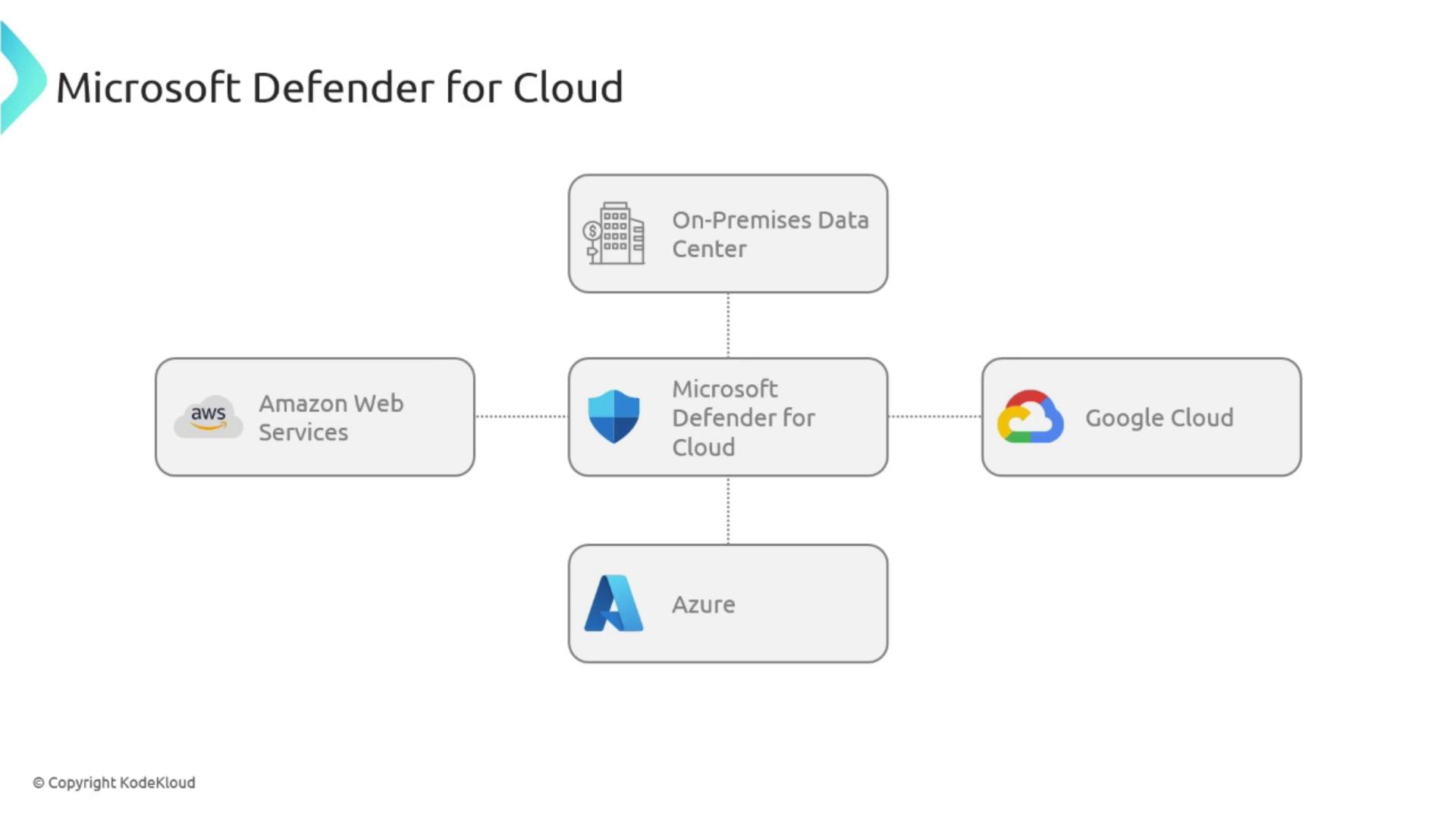
This robust system continuously monitors your infrastructure and extends its protection beyond Azure. By connecting repositories such as GitHub, Azure DevOps, and GitLab, it generates actionable security recommendations that can help you stay ahead of emerging threats.
Imagine Microsoft Defender for Cloud as an advanced security system for a state-of-the-art high-rise building—constantly monitoring, assessing risks, and taking prompt actions to ensure the safety of all its occupants.
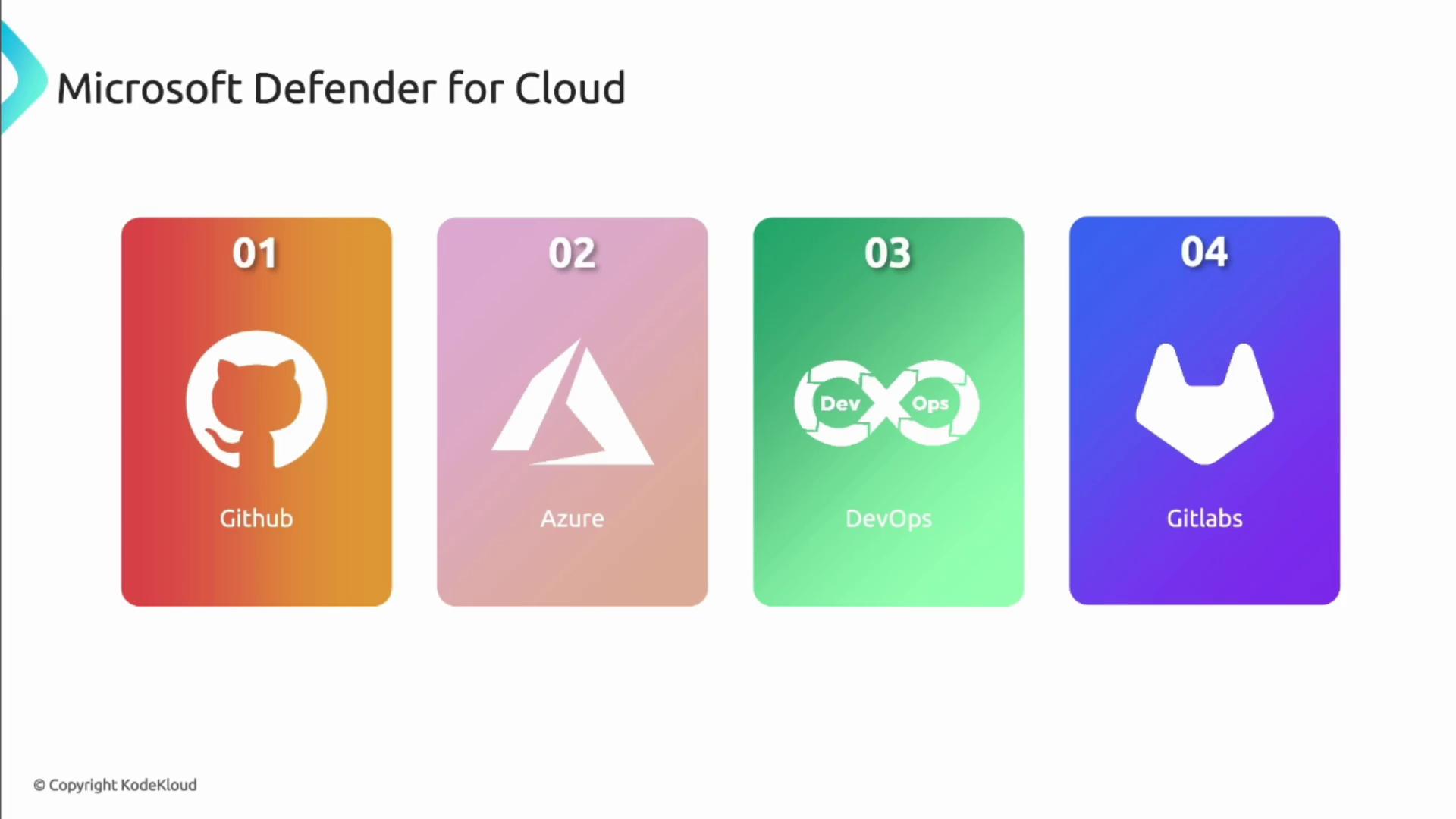
Key Features
Formerly known as Security Center, Microsoft Defender for Cloud packs a host of essential features:
- Continuous Assessment: Automatically evaluates the security posture of your Azure, on-premises, and multi-cloud environments—operating like a dedicated 24/7 security team.
- Threat Protection: Detects and responds to security threats across connected workloads, much like an advanced alarm system that activates upon detecting unauthorized activities.
- Secure Score: Offers a clear, quantifiable measure of your security posture and actionable recommendations, serving as a detailed safety audit for your organization.
- Regulatory Compliance Dashboards: Provides insights into regulatory standards such as ISO 27001, PCI DSS, and others, ensuring that your environment adheres to established safety and compliance codes.
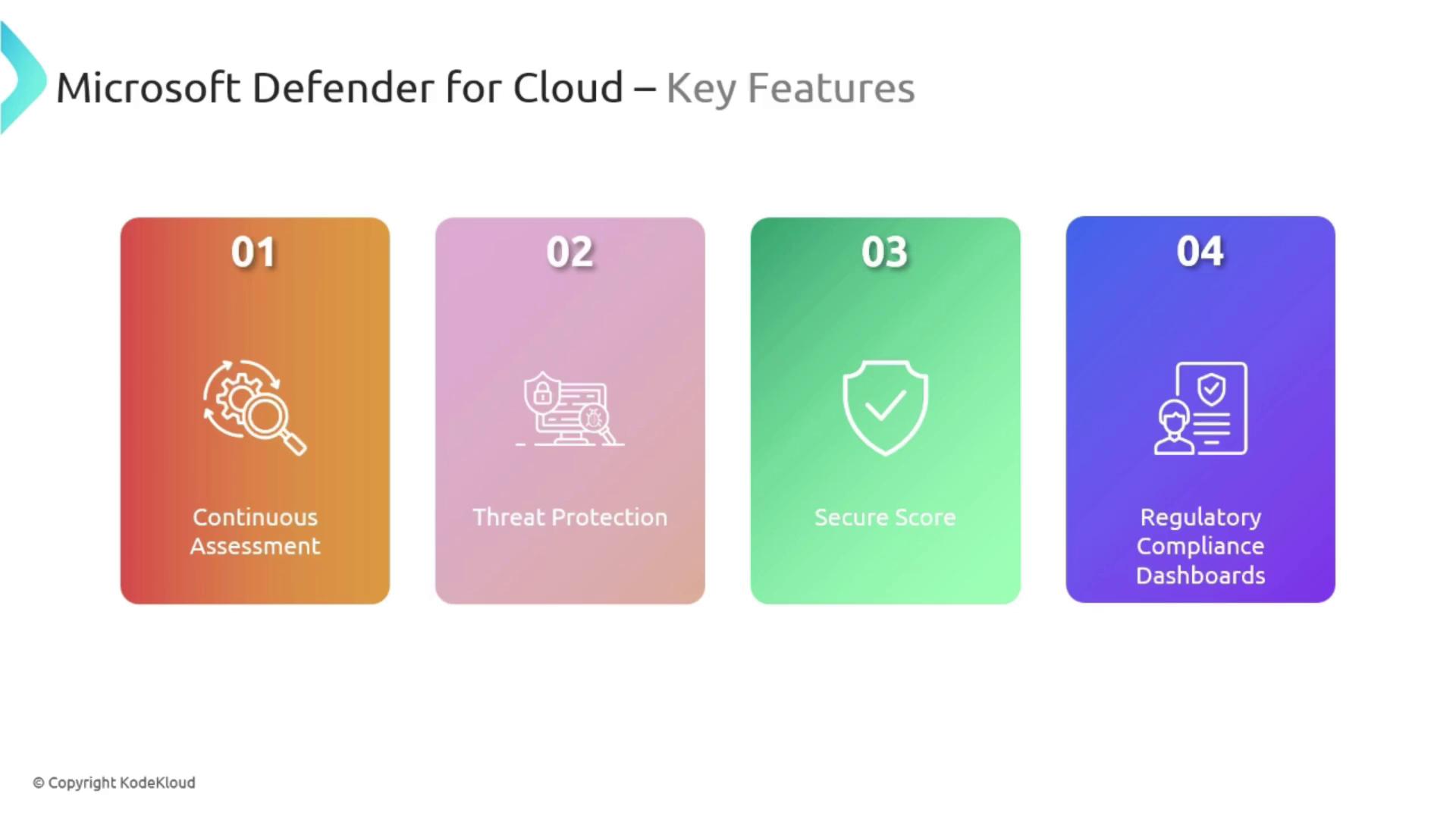
Benefits
Microsoft Defender for Cloud is especially valuable for organizations without a dedicated security team. It simplifies the process of managing vulnerabilities, compliance, and overall security strategy. Key benefits include:
- Comprehensive Security: Defends against a wide range of threats and vulnerabilities.
- Centralized Management: Serves as a unified command center for managing security across Azure, multi-cloud setups, and on-premises resources.
- Automated Recommendations: Acts like a personal security consultant, offering actionable steps to improve your security posture.
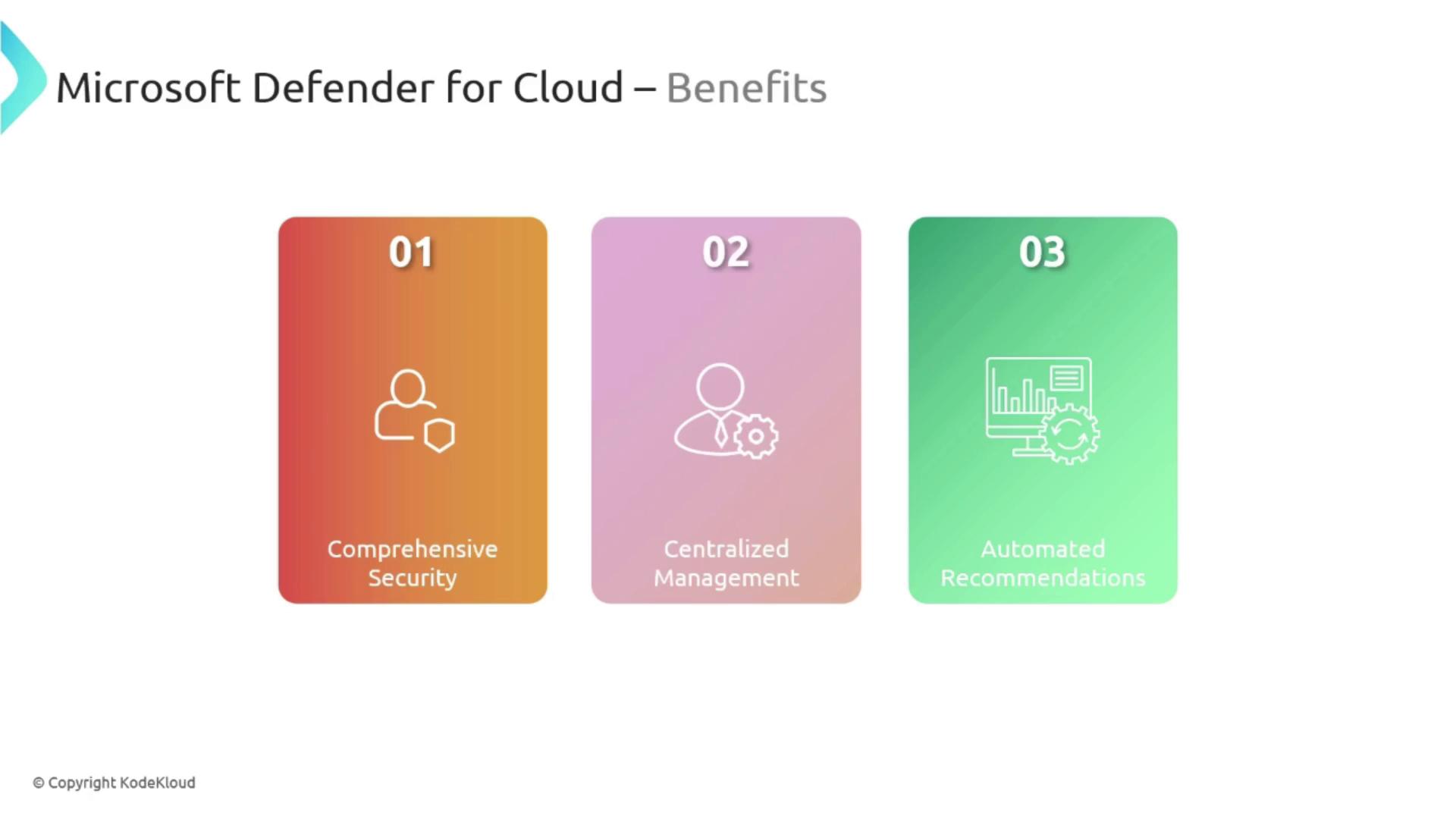
Note
Integrating Microsoft Defender for Cloud into your security strategy not only enhances protection but also streamlines compliance with various regulatory standards.
Use Cases
Microsoft Defender for Cloud excels in securing both cloud-based and hybrid workloads. It is particularly effective in the following scenarios:
- Cloud Workload Security: Implements specialized security protocols tailored to different areas of your infrastructure.
- Compliance Management: Assists organizations in meeting industry standards such as PCI DSS for financial data and HIPAA for health data.
- Enhancing Cloud Security Posture: Strengthens the overall security framework of your infrastructure by ensuring continuous monitoring and automated remediation.

Navigating Microsoft Defender for Cloud in the Azure Portal
Accessing Microsoft Defender for Cloud through the Azure Portal offers an intuitive experience. Upon logging in, you will be greeted with numerous security recommendations prioritized by their severity—high, medium, or low.

Clicking on any recommendation reveals detailed information, including a description, additional recommendations, remediation steps, and even a quick-fix option. You also have the ability to inspect unhealthy resources.
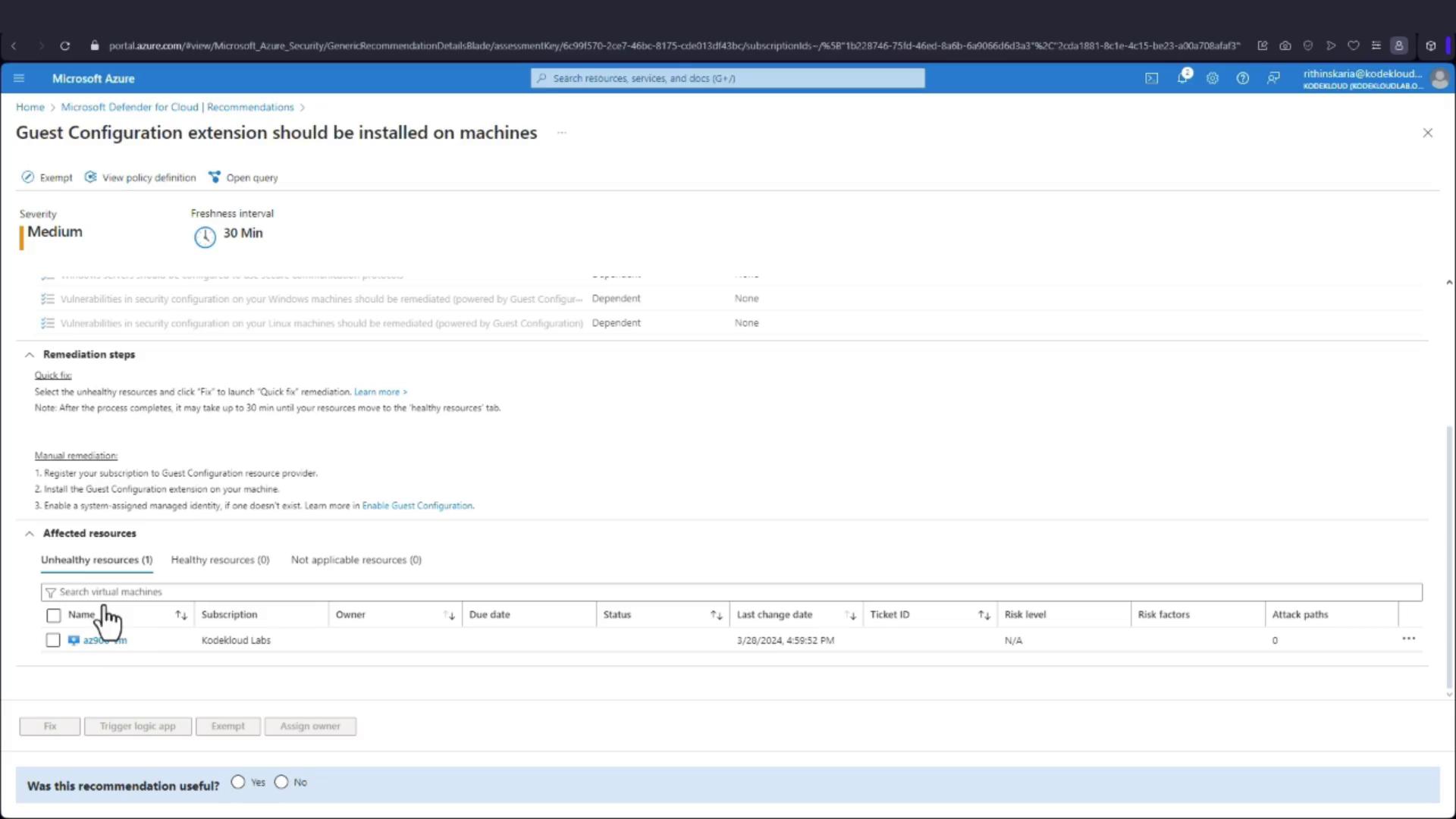
The system also supports integration with AWS, Google Cloud Platform, GitHub, Azure DevOps, and more. In the Overview section, you will find your secure score—which is updated periodically. Note that when starting with a new subscription or lab environment, it can take up to 24 hours for the secure score data to fully populate.

For instance, if the dashboard indicates that 46 out of 65 controls have passed, it shows that while many of Microsoft’s security best practices are in place, there is still room for improvement. Issues such as an unmonitored Virtual Machines inventory or insufficient workload protections can be identified and addressed accordingly.
Warning
Ensure that you allow up to 24 hours for the secure score data to populate following the activation of Microsoft Defender for Cloud in a new environment.
Conclusion
Microsoft Defender for Cloud delivers robust security features to enhance your cloud security posture. Its centralized management, continuous assessments, threat detection, and automated recommendations make it an essential component of modern cloud security strategies. While associated costs exist, the extensive benefits provided make it a worthwhile investment in protecting your infrastructure.
This concludes our article on Microsoft Defender for Cloud. In our next module, we will delve into the cost management aspects—a key component of effective overall management and governance. Stay tuned for more insights.
Watch Video
Watch video content